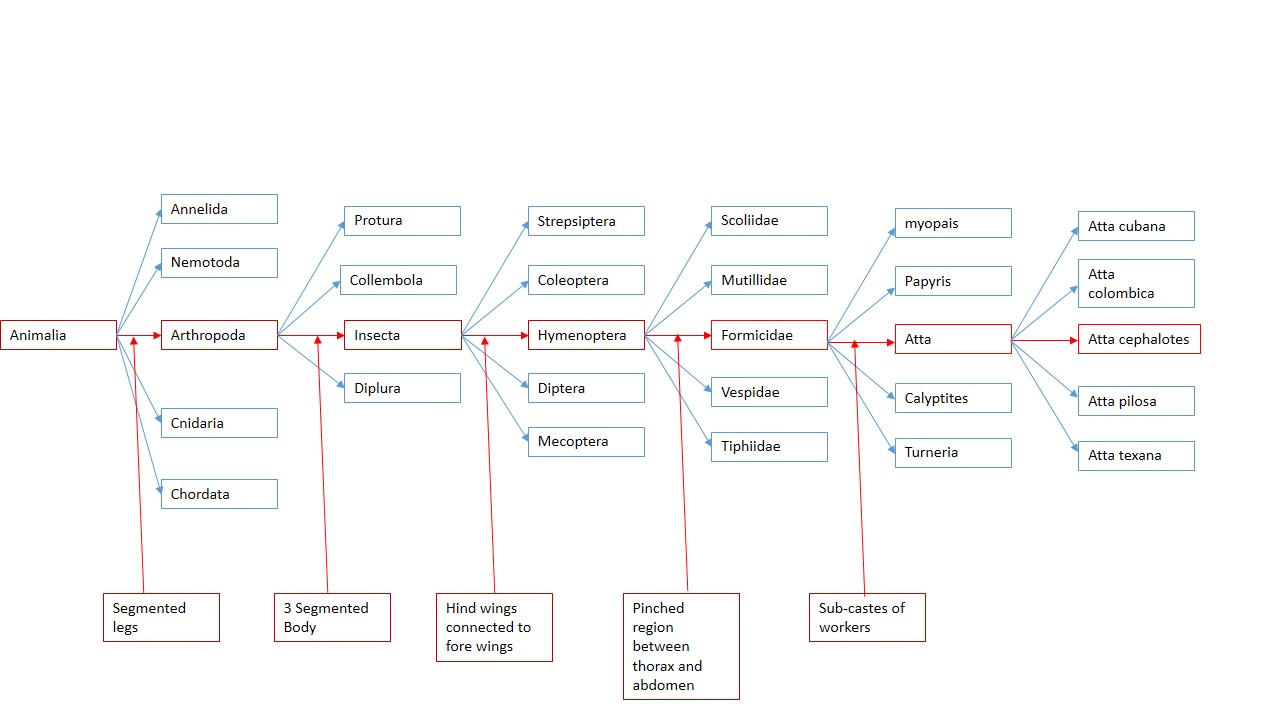Classification
Domain: Eukarya
Kingdom: Animalia
Phylum: Arthropoda
Class: Insecta
Order: Hymenoptera
Family: Formicidae
Genus: Atta
Species: Atta cephalotes
Atta cephalote tranlated means: Father, having a
head(Classics Technology Center, 2013)

Domain: The domain Eukarya is characterized by
organisms having a nucleus.
Most cells within an Atta cephalote have nuclei. All
multicellular organisms are in the domain Eukarya with some
unicellular organisms. Other organisms
in this group are:
Kiwis and
Juniper.
Kingdom: All animals are in the kingdom Animalia. They are
charcterized by a backwards facing tail which is shared by their
sister group Choanoflagellates. Other animals that are in this group
are:
Snowshoe Hare and an
Emu.
Phylum: The main characteristic of Arthropoda is segmented legs.
All insects, spiders and crustacea are in this phylum. They also
prefom ecdysis. Other animals that are in this group are:
Red Rock Crab and
Goose Barnacle.
Class: Insects are the biggest class in the world.
Animals that are under the class Insecta have a three segmented
body, three pairs of legs, and a set of antennae. Ants are a perfect
model for the insect class because you can see these characteristics
on their body. Another animal that is in this group is the
Damselfly.
Order: There are four large orders within Insecta. Hymenoptera
is one of them. Animals that are under this group have hind wings
that are connected to the front wings by little hooks.
Family: Like all insects, Formicidae have three main body parts.
What makes animals of this family special is because the area
between their thorax and abdomen is unusually thin and looks pinched.
Another ant that is in this family is the
East Asian Ant.
Genus: The Atta Genus encompases a few types of animals.
What they all have in common is the difference within the subcastes
of workers. Different workers work on different activities to make
sure the colony runs smooth.
Species: Atta cephalotes are the species of intrest in
this case. They are the most wide spread of all Atta and
are found in Central and South america.
Phylogeny information cited from Encyclopedia of Life, 2013